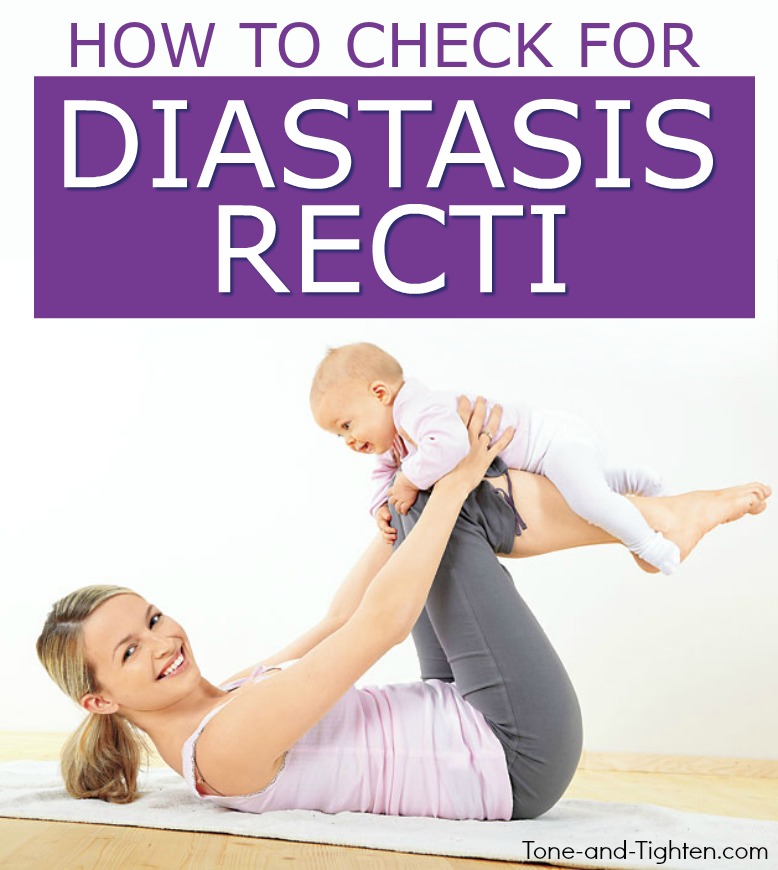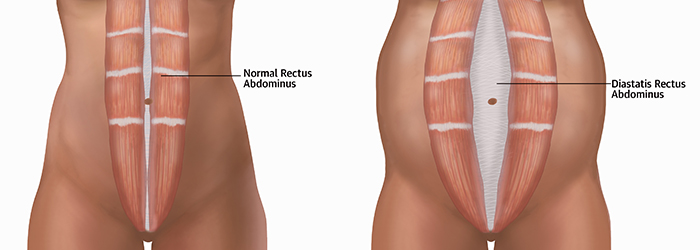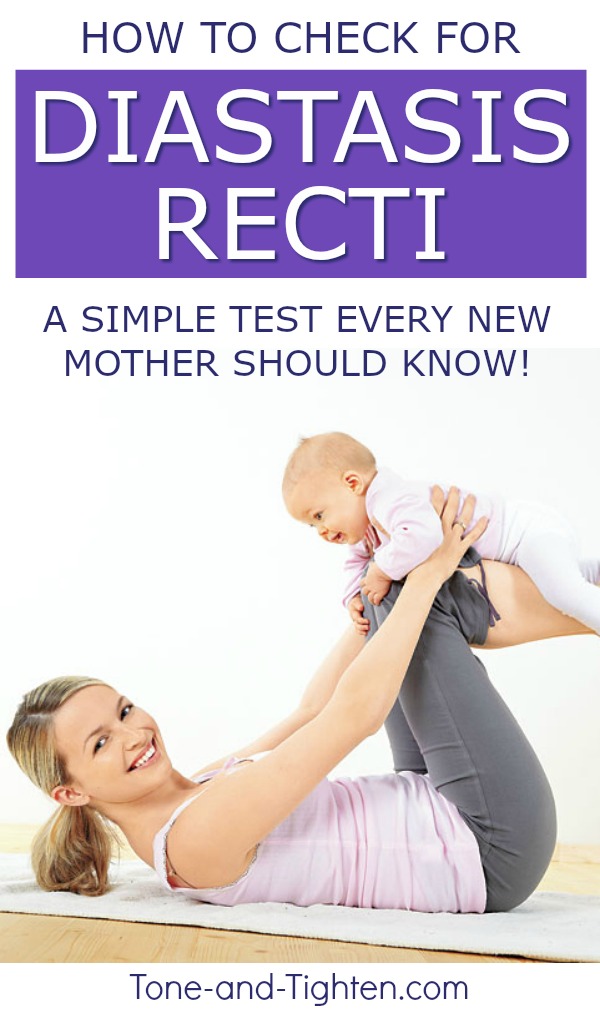Workouts, healthy recipes, motivation, tips, and advice all right to your inbox! Subscribe to Tone-and-Tighten.com RIGHT HERE and get our FREE “Beginner’s Guide To Weight Loss” ebook!

Recently, my wife and I had the privilege of welcoming our fourth child into our home! Of course, with a newborn comes incredible joy, incredible fatigue, and an incredible amount of love!
My wife is now six weeks postpartum and ridiculously excited to resume working out again (even “ridiculously excited” it is somewhat of an understatement in her case! Let’s say she’s incredibly anxious to get her pre-baby body back!).
However, the physical therapist in me says that we need to check a few things before she jumps back in to working out full-time. The most important of which after having a baby is diastasis recti.
Today on Tone and Tighten I wanted to quickly discuss what is a diastasis recti, why it’s important to know whether or not you have one, and show you a simple test of how to check yours. Here we go!
Easiest thing to do – watch this video to learn all you need to know!
The written explanation is as follows…
There are four muscle groups that collectively make up our “core” or “abs”. The muscle that is stretched the furthest and therefore usually undergoes the most trauma during pregnancy is called the rectus abdominus.
Your rectus abdominus is a skinny vertical muscle that runs from the bottom of your ribs to the top of your pelvis. It is actually two muscle bellies joined by a ligament in the center. It is the separation of these two muscles and the concomitant stretching (and potential tear) of this ligament that causes a diastasis recti.

Injury to this area can act as a proverbial “weak link” in your core which can lead to worse problems later on including abdominal pain, hernia, and low back pain (especially given all the lifting and carrying you young mommas are doing).
Basically it’s not a very good thing to have and I hope you never do… however if you do have it it’s important to be aware of it so you can care for it appropriately. Let’s talk about how to check for it…
To check and see whether not you have this diastasis condition:
- Lie down flat on your back with your knees bent and one hand behind your head.
- Slightly engage your rectus abdominus by lifting your head, neck, and shoulders slightly off the ground (doesn’t need to be a full crunch).
- To test the INTEGRITY of the ligament:
- Place the tips of three fingers vertically just above your bellybutton and gently pressed down (you should feel the space between your two muscle bellies). You should feel some resistance – like pushing into a balloon that’s inflated.
- Continue to check the integrity of the ligament all the way from your belly button from the top of your pelvis to the bottom of your rib cage. It should consistently give you resistance all the way up and down.
- If you do have a diastasis you’ll be able to push your fingers down further into your stomach meeting very little resistance.
- To test the WIDTH of the separation
- No turn your fingers horizontal. How many fingers can you push into the valley between your abdominal muscles?
- Check from the top of your pelvis to the bottom of your rib cage. How many fingers can you fit into the valley between your muscles?
- 1-2 fingers is “normal” after a pregnancy; 3 fingers is a sign that you most likely have a diastasis recti.
Again, if any of these tests are positive I highly encourage you to consult with your medical provider to receive the personal, individualized care you need to resolve this issue.
Every woman is different just like every case of diastasis is different; it’s for these reasons that personal care with your primary OB/GYN is recommended.
If you find that your test is positive and a diastasis is present don’t despair! There’s actually a lot that you can do to help heal it up! The key is to activate a muscle called the “transverse abdominus”. This muscle originates on the lowest vertebrae in your back and wraps around both sides to the front of your abs to sit under the rectus abdominus… basically forming a “corset” around your midsection. Activating this muscle and training it in the right way can actually serve to close up that separation and make your abs healthy and functional again.
Looking for some great resources to heal up your diastasis recti and get your pre-baby body back? Check out some of our YouTube videos designed to help you do just that!
Of course, getting back into your pre-baby body isn’t all about exercise and ab work! The fastest way to fit into your skinny jeans is by eating a healthy, nutritious diet that will support you and your baby.
Our “30 Days Of Healthy Eating” menu plan is perfect for any new momma looking to get eating back on track and calories under control. Check it out!
30-Day Healthy Eating Menu Plan

- 30 days of breakfast, lunch, snack, and dinner recipes
- Delicious recipes that the whole family will enjoy
- Easy, build-it-yourself menu planning format
- Click here to learn more!
And when you find you don’t have a diastasis condition and are ready to jump back into working out regularly our“30 For 30” Workout Series is perfect! It contains thirty 30-minute workouts designed specifically to burn fat and build muscle. Learn more here:
- 30 Unique workouts you can do at home
- Each workout is 30 minutes or less
- CLICK HERE to learn more!
HERE’S ANOTHER GREAT POST YOU MIGHT BE INTERESTED IN! All about “How To Get Rid Of Mommy Tummy” – featuring three great tips to help you fix your “mom pooch” and flatten your abs after pregnancy:
If you have any questions or comments regarding the information found in this post please feel free to leave me a comment below or shoot me an email at jared{at}toneandtightenfitness{dot}com.
Make it happen,
Jared




